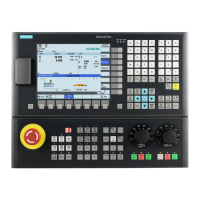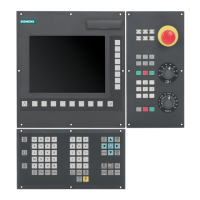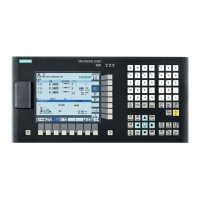S3: Synchronous spindle
13.4 Points to note
Extended Functions
738 Function Manual, 03/2013, 6FC5397-1BP40-3BA1
13.4.4 Differential speed between leading and following spindles
When does a differential speed occur?
A differential speed develops, e.g. with turning machine applications, when two spindles are
opposite each other. Through the signed addition of two speed sources, a speed component
is derived from the leading spindle via the coupling factor. In addition to this, it is possible to
program the following for the following spindle:
● speed with S... and
● direction of rotation with M3, M4 or M5
The spindles can normally be synchronized by a coupling factor with the value '-1'. This sign
reversal then results in a differential speed for the following spindle as compared to an
additional programmed speed. This typical behavior in relation to the NC is illustrated in the
following diagram.
6HWVSHHG
(QDEOHE\
3/&
$FWXDO
VSHHG
6IROORZLQJVSLQGOH
0 6
6OHDGLQJVSLQGOH
06
USP
USP
USP
USP
&28321
&RXSOLQJIDFWRU
[
6SHHG
LQWHUSRODWRU
0
0
6SHHG
LQWHUSRODWRU
Figure 13-4 Schematic representation of process resulting in differential speed
Example
Program code Comment
N01 M3 S500 ; S1 rotates positively at 500 rpm
; the master spindle is spindle 1
N02 M2=3 S2=300 , S2 rotates positively at 300 rpm
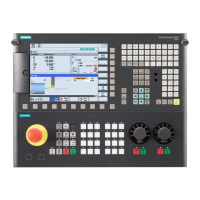
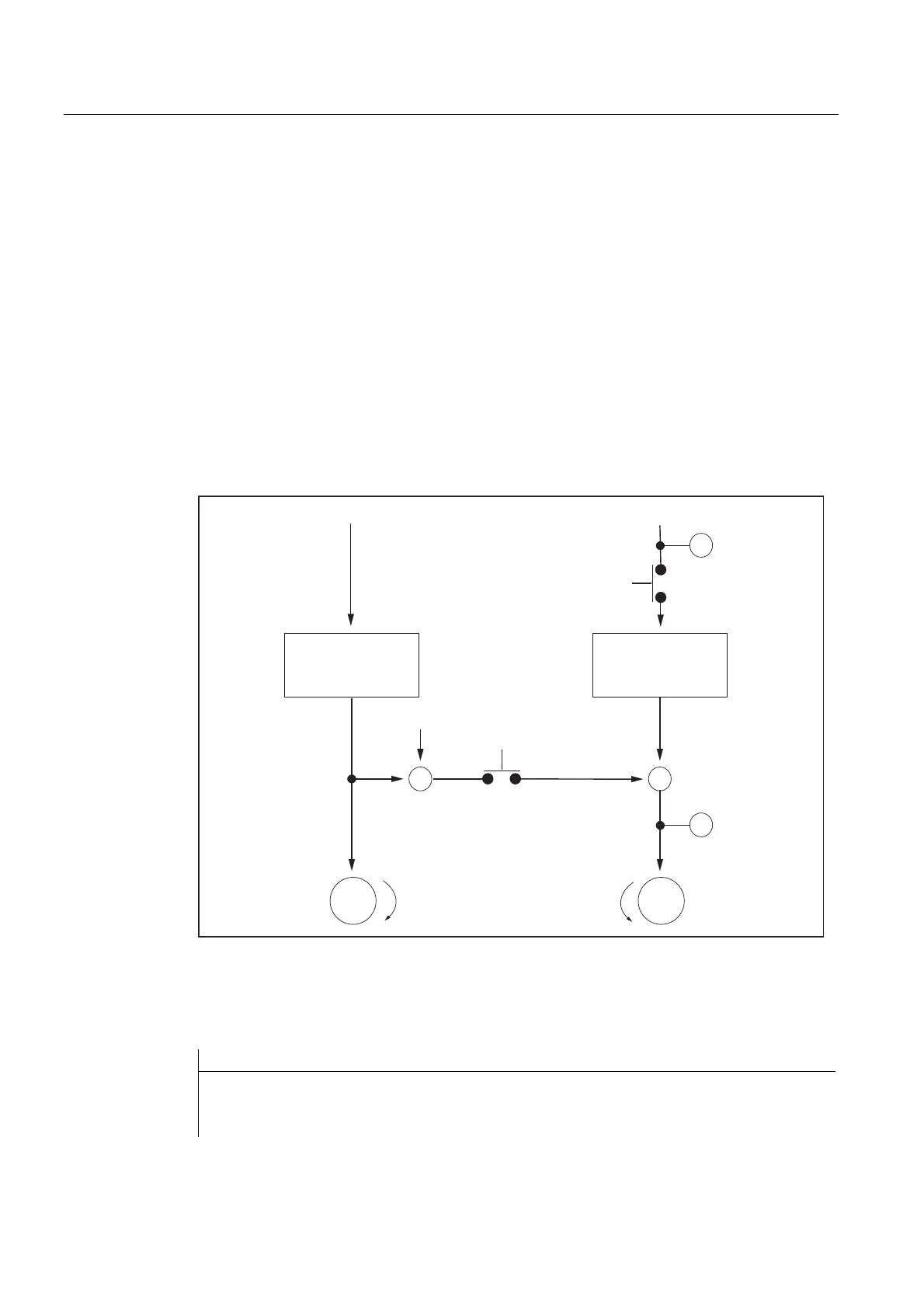